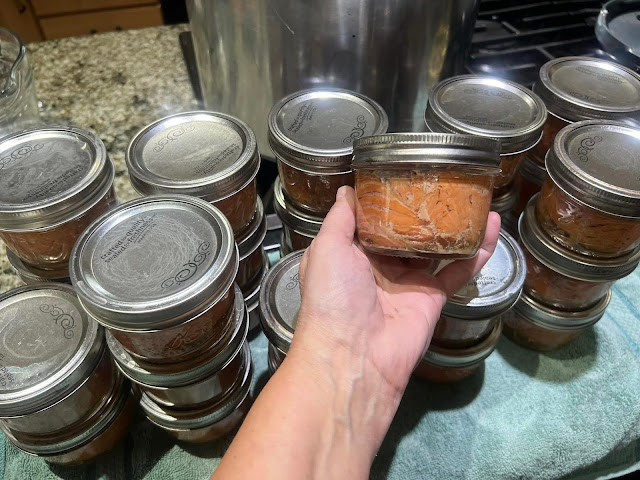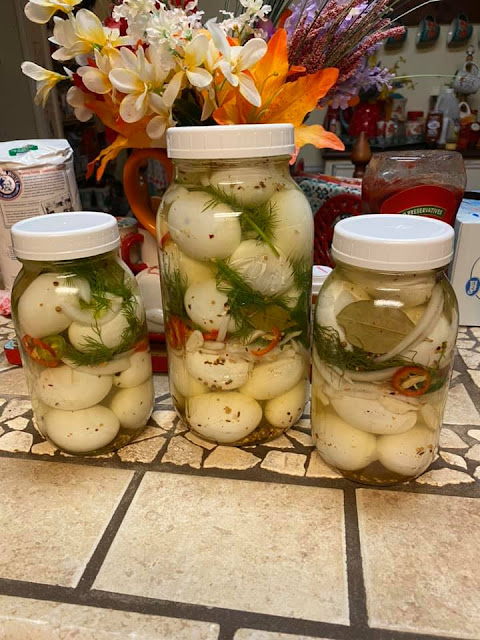Alaska Red Salmon: A Journey from Catch to Table - Canning, Vacuum-sealing, Brining, and Smoking
Join us on an exciting adventure from catching Alaska Red Salmon to transforming them into delectable dishes. Discover the joys of canning, vacuum-sealing, brining, and smoking as you create delicious meals from this prized fish.
When a friend offered me Alaska Red Salmon, I couldn't resist the opportunity. The question was, "Do you want 10 fish or 20?" And of course, I chose to go big. Yesterday morning, my friend arrived at my doorstep with a cooler full of fish, catching me still in my nightgown. Thankfully, the fish had already been gutted and filleted, thanks to the small fee I paid. Little did I know that my kitchen would soon become a bustling hub of culinary activity.
I started by using a fillet knife to carefully remove the skin off the fish that would be going into the canning jars. It was a meticulous process, but I knew it would be worth it in the end. With the skin removed, I proceeded to can 28 half pints of perfectly prepared Alaska Red Salmon. The satisfaction of seeing those jars lined up on my pantry shelves was unmatched.
But that wasn't all. I also vacuum-sealed 24 fillets to preserve them in the freezer. The beauty of vacuum-sealing is that it locks in the freshness and flavor, ensuring that I can enjoy the taste of Alaska Red Salmon even months later. The remaining fillets were placed in a brine soak, allowing them to absorb the flavors and become even more delicious. Before bedtime, I carefully pulled them out to dry, getting them ready for the next step.
This morning, it was time to take the brined fish to a whole new level of flavor. They went into the smoker, where they would be infused with a delicate smoky essence. As the aroma filled the air, I couldn't help but feel a sense of excitement. After the fish had cooled, I sealed them in vacuum bags for the freezer. Now, I had a stock of smoked Alaska Red Salmon ready to be enjoyed whenever the craving struck.
As I looked around my kitchen, it resembled a scene of culinary chaos. Fish slime had found its way onto the floor and the front of the sink cabinet. But the mess was a testament to the delicious adventure I had embarked upon. Even though I couldn't seem to get the fish slime off my hands, it was a small price to pay for the satisfaction of creating something so delightful.
Yes, I was exhausted from the process. But the exhaustion was overshadowed by the sheer thrill of having all that beautiful, tasty fish at my disposal. Alaska Red Salmon had become more than just a meal – it was an experience, a journey from catch to table. The hard work, the mess, and the fatigue were all worth it when I took that first bite of perfectly prepared, homemade Alaska Red Salmon.
So, if you ever find yourself with the opportunity to indulge in Alaska Red Salmon, don't hesitate. Embrace the adventure, roll up your sleeves, and let the magic unfold. From canning to vacuum-sealing, brining to smoking, each step brings you closer to the ultimate reward – a delicious taste of Alaska's bounty.
FAQs:
1. Can I use the same process for other types of fish?
Absolutely! While this article focuses on Alaska Red Salmon, the canning, vacuum-sealing, brining, and smoking techniques can be applied to various types of fish. Each fish may require slight adjustments in preparation and seasoning, but the overall process remains similar.
2. How long does vacuum-sealed fish last in the freezer?
When properly vacuum-sealed, fish can last in the freezer for up to six months to a year, depending on the type of fish. It's essential to label and date the packages to ensure that you use them within the recommended timeframe for optimal quality.
3. Are there any alternative methods for preserving fish, besides canning and vacuum-sealing?
Yes, there are other methods for preserving fish, such as freezing without vacuum-sealing, pickling, or curing. Each method offers unique flavors and textures, allowing you to explore different culinary possibilities.
Alaska Red Salmon, canning, vacuum-sealing, brining, smoking

























Comments